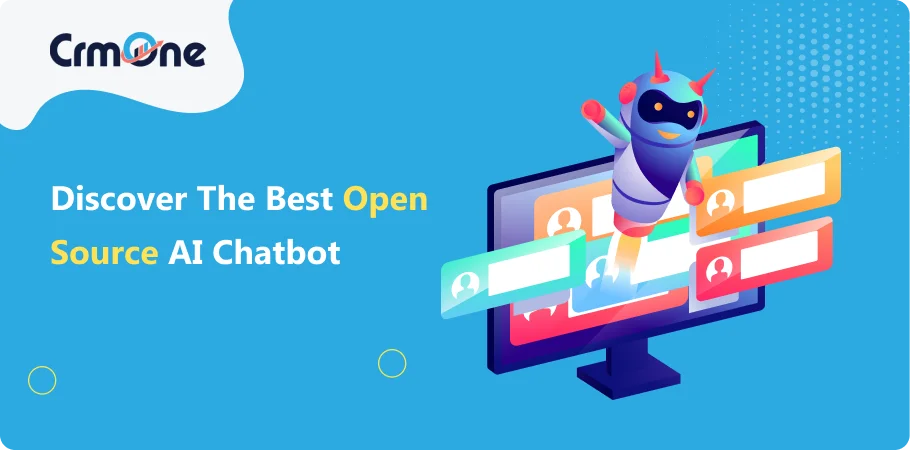Welcome to this blog, where we delve into the fascinating world of AI chatbots, focusing mainly on the top open source AI chatbot options available in 2025. Integrating AI into traditional chatbots has revolutionized how we interact with digital platforms, making these interactions more intuitive, efficient, and personalized.
Chatbots with AI mimic human conversations using advanced natural language processing (NLP) and machine learning. This advanced technology enables chatbots to understand, learn from, and respond to user inquiries in a remarkably human-like way. Businesses and organizations across various sectors can deploy chatbots to offer 24/7 customer service, streamline operations, and enhance user engagement without constant human oversight.
Chatbots using AI are essential in various fields, from healthcare, where they can assist in patient care management, to e-commerce, where they streamline shopping experiences, and even to education, where they offer personalized learning assistance. Additionally, platforms like Facebook Messenger can leverage AI chatbots to provide instant, personalized interactions with users, expanding the reach and accessibility of these intelligent assistants. The key to harnessing the full potential of these AI-driven assistants lies in their flexibility and the ability to deploy them across different platforms, ensuring maximum reach and impact.
Understanding Open Source AI Chatbot Development
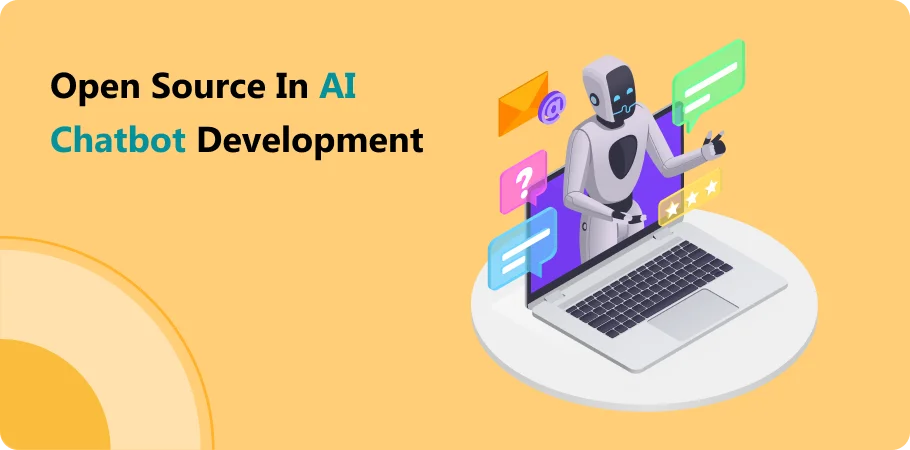
Open-source software has revolutionized AI chatbot development, offering numerous benefits that foster innovation and collaboration. By making the source code accessible, open-source projects allow developers to build on existing frameworks and algorithms, speeding up the development process and reducing costs. Popular open-source AI chatbot platforms, such as Rasa, Botpress, and ChatterBot, provide robust tools and libraries that enable developers to create highly customizable and scalable chatbots.
These platforms often include pre-built modules for NLP, machine learning, and conversation management, making it easier for developers to implement sophisticated features without starting from scratch. The collaborative nature of open-source communities is another significant advantage in conversational ai development. Developers from around the world contribute to these projects, sharing their expertise and insights, which leads to more innovative solutions and rapid advancements in the field.
Moreover, the widespread use and constant refinement of open source chatbots drive the adoption of best practices and standards, resulting in more reliable and effective conversational ai. As a result, open-source initiatives are playing a crucial role in shaping the future of conversational ai technology, making it more accessible, efficient, and inclusive.
Advantages of Using Open Source Software for AI Chatbot

Flexibility and Customization:
Open-source software provides the foundational blocks for creating chatbots that meet specific business needs. Developers can modify the source code to add unique features or integrate with existing systems, offering a comprehensive solution for modern conversational apps.
Cost-Effectiveness:
Most open-source platforms are free, significantly reducing the costs of developing and utilizing chatbots with AI. This makes it feasible for businesses of all sizes to leverage advanced AI capabilities.
Community Support:
Open-source projects benefit from the support of a global community of developers. This means you have access to a vast pool of knowledge and resources, which can be invaluable when troubleshooting or seeking to add innovative features to your chatbot.
Transparency and Security:
With open Source, the underlying code is accessible for review. This transparency allows the company to identify and rectify security vulnerabilities, leading to the identification and remedy of security vulnerabilities in more secure applications.
Integration with Advanced AI Technologies:
Open-source AI chatbot frameworks and platforms often include or can be easily integrated with cutting-edge AI technologies for natural language processing (NLP) and natural language understanding (NLU). This integration enables chatbots to understand and process human language more effectively, facilitating natural language interaction.
How Artificial Intelligence Powers Chatbot Functionalities
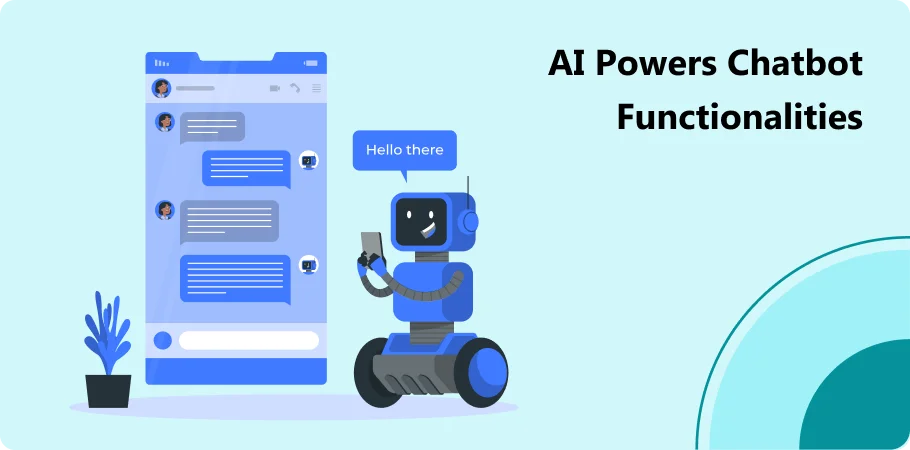
AI integrates various technologies to enable chatbots to understand, interpret, and respond to human input intelligently. Below are the ways AI contributes to chatbot development:
Natural Language Processing (NLP) and Natural Language Understanding (NLU): AI uses these technologies to interpret the user’s intent from their input, even when the input is in conversational, unstructured language. This ability allows chatbots to process and respond to queries accurately.
Learning from Interactions: AI enables chatbots to learn from past interactions, improving their responses over time. By analyzing customer service chat logs, AI chatbots can identify patterns and preferences, tailoring their responses to meet user needs better.
Integration with Business Logic: The AI chatbot can integrate with a company’s existing business logic and databases, providing users with relevant and personalized information.
AI Features in Chatbots
Adaptive Responses:
Thanks to NLP and NLU, the conversational ai can generate responses based on the conversation’s context. This includes understanding and processing user sentiment to tailor the tone of the response.
Machine Learning:
Beyond understanding language, the chatbots use machine learning to improve their accuracy and efficiency over time. They analyze patterns in data, such as customer service chat logs, to better anticipate user needs.
Personalization:
By leveraging data from past interactions, the AI chatbot can offer personalized greetings, recommendations, and services, enhancing the user experience.
Open Source Platforms for AI Chatbot Development
Open-source platforms offer comprehensive and flexible tools for building AI-powered chatbots. These platforms often include:
Intuitive Interface:
Many open-source chatbot platforms provide an intuitive interface for designing chatbot conversations and workflows, making it easier to incorporate complex business rationale.
Premium Features for Free:
Open Source means access to premium features without the price tag. Developers can use advanced conversational ai functionalities, like NLP, NLU, and machine learning algorithms, to create sophisticated chatbot applications.
Customization and Scalability:
open source chatbots flexibility allows for the customization of user interfaces and the scalability of chatbot functionalities to meet a business’s growing needs.
Open Source Chatbot Frameworks VS Platforms
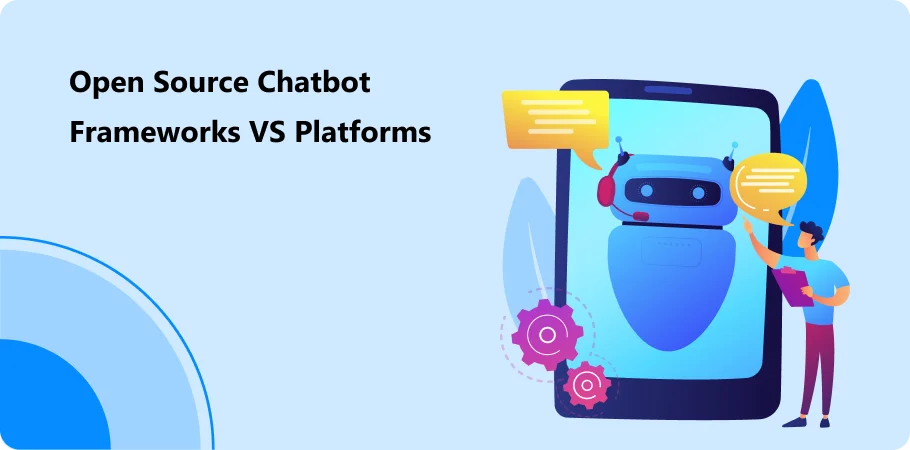
When delving into chatbots, it’s essential to understand the distinction between chatbot frameworks and platforms. Both serve as critical tools in developing a conversational assistant. Still, they cater to different aspects of the creation and deployment process. Below, we explore these differences and essential features to consider and provide an overview of leading options in the market.
Difference Between Chatbot Platforms and Frameworks
Open Source Framework:
An open-source chatbot software framework is a library or set of tools that provide the basic building blocks for developing and deploying chatbots. It offers the core functionality but requires more coding and development effort to create a complete chatbot solution. Frameworks are ideal for developers looking for comprehensive and flexible tools to build customized chatbots with rich interaction capabilities. For instance, Google Assistant is a prime example of a chatbot built on such frameworks, showcasing the potential for creating sophisticated and highly interactive conversational ai.
Chatbot Platforms:
These platforms offer a more holistic environment, including an intuitive interface, development tools, and integration options that allow for the rapid creation and deployment of chatbots across various communication channels. They often come with pre-built user interfaces and business logic, reducing the coding needed.
Book a CrmOne Demo
Experience the CrmOne simplicity and power. Our experts will show you the best ways to use it and answer your questions in real time. See how CRMOne fits your needs.
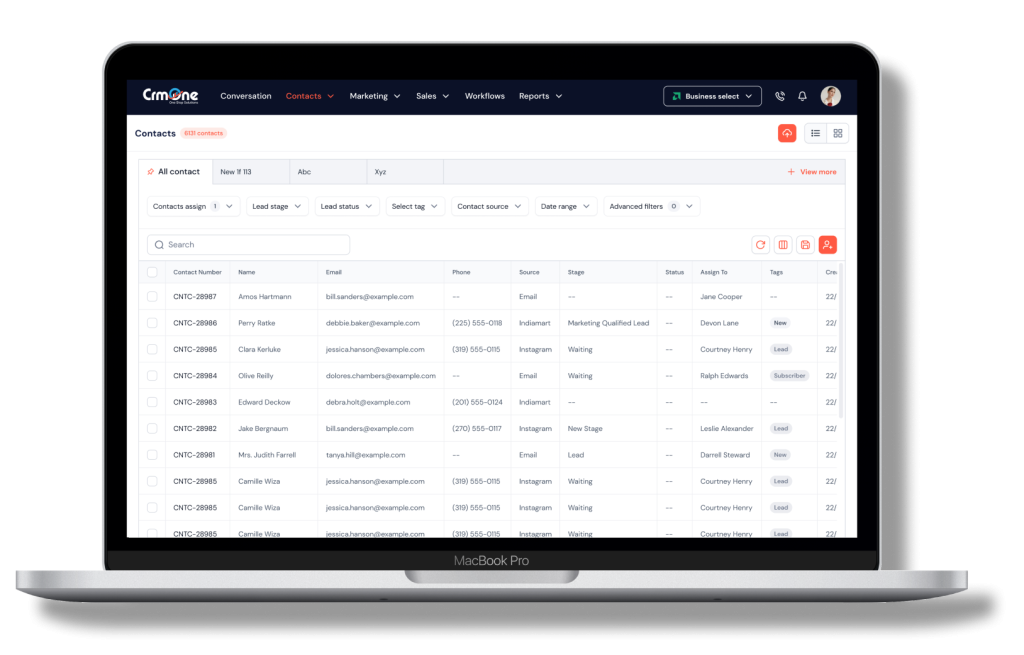
Review of Leading Open Source Chatbot Platforms
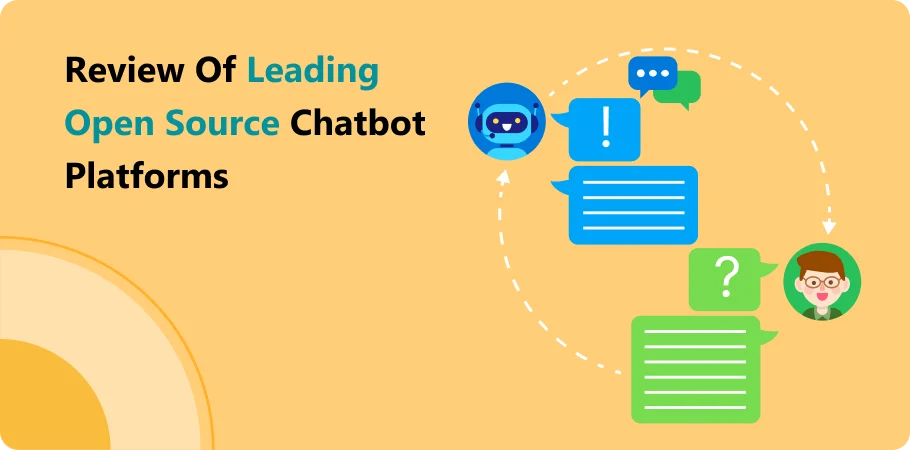
Rocket Chat:
An open source chatbots platform that integrates chatbot functionality into your communication strategies, perfect for personal and commercial use.
Mattermost:
It offers high customizability and control, ideal for enterprises needing secure and scalable communication solutions.
Mycroft:
It is an open-source voice assistant platform that can be extended to chatbot functionality. It offers engaging interaction through voice commands.
Botsify:
It is a platform with a user-friendly interface for creating chatbots without extensive coding knowledge that supports various communication channels.
Telegram Bot API:
Although primarily a messaging app, Telegram offers a powerful API for building chatbots that can utilize its secure messaging framework.
How to Choose the Right Platform for Your Needs

Determine Your Requirements:
Assess whether you need a highly customized, comprehensive solution or a more straightforward chatbot.
Consider Your Development Skills:
Frameworks require more technical expertise, whereas platforms can be more suitable for those with less coding experience.
Evaluate Integration Needs:
Ensure your chosen option can integrate seamlessly with your existing systems and tools.
Community and Support:
Look for solid community support or premium support options if your project demands it.
Future Scalability:
Consider how the platform or framework will accommodate your growing needs over time.
List of Best Open-Source Chat Bots
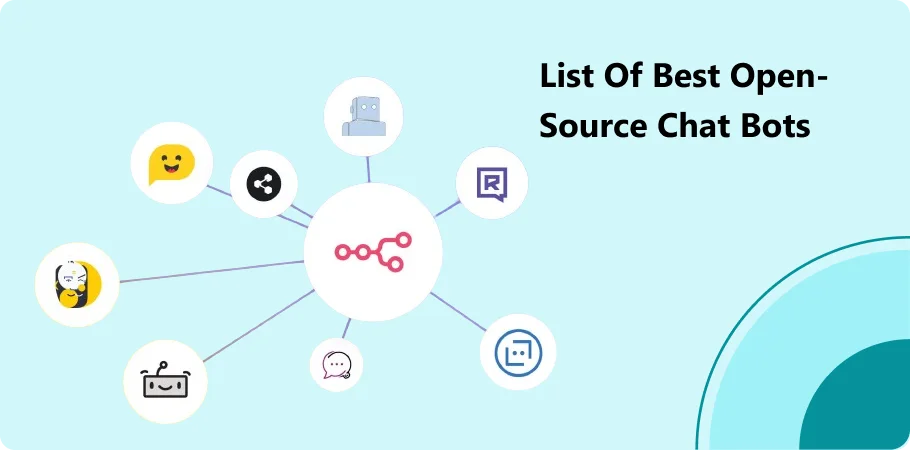
These entirely open-source AI chatbots offer unique tools and capabilities for developers looking to craft chatbots. From adaptable tools for building bots to advanced dialogue and user interface systems in graphics, these chatbot platforms facilitate a wide range of conversational DSL, catering to personal and commercial usage. Whether you’re new to development(chatbot) or an experienced coder, this open-source framework completely sources traditional chatbot solutions. It provides the resources to create dynamic, responsive, and engaging conversational assistants.
Rasa
Description:
Rasa is powerful for building chatbots that easily handle NLP. It is renowned for its ability to create a sophisticated dialogue system through conversational DSL (Domain-Specific Language).
Features:
Multi-skill integration, creating stories for training, and a graphical interface for designing conversational flows.
Botpress
Description:
Botpress is an open system and chatbot builder that offers an accessible platform for developing conversational applications. Furthermore, it is Equipped with a user-friendly visual conversation builder and an emulator for testing, streamlining the development process.
Features:
User-friendly graphical interfaces, adaptable tools for tasks related to NLP, and integration of several skills to make crafting and creating chatbots straightforward.
Claudia Bot Builder
Description:
This JavaScript library simplifies the creation of bots for various platforms, including Facebook Messenger and Slack. Claudia Bot Builder focuses on ease of use and deployment.
Features:
Allows quick updates to existing bots without server changes and integrates well with AWS Lambda for scaling.
Microsoft Bot Framework
Description:
Offers comprehensive tools for building modern conversational apps and chatbots to support messaging platforms and dialogue systems.
Features:
Robust NLP capabilities, graphical interfaces for designing bots, and extensive documentation for developers.
Wit.ai
Description:
It provides a flexible platform for developing bots to understand and process human and natural language understanding, making it ideal for NLP tasks.
Features:
Supports voice and text-based user interactions and allows developers to create stories and intents to train the chatbot.
Dialogflow (by Google)
Description:
A comprehensive development suite for creating conversational user interfaces for websites, apps, and conversational applications.
Features:
Integrates Google’s machine learning expertise for natural language understanding and multi-skill integration and has a user-friendly graphical interface.
Telegram Bot API
Description:
Provides tools for developing bots within the Telegram messaging app, offering a flexible toolset for developers.
Features:
Supports custom keyboards inline queries and strongly focuses on privacy, unlike some proprietary software.
Mycroft
Description:
An open system for building voice-activated assistants that can be extended into chatbot functionalities.
Features:
It handles a Python library for crafting chatbots, seamlessly integrates multiple skills, and can control smart home devices.
Hubot
Description:
Developed by GitHub, Hubot is designed to streamline company operations, acting as a scriptable robot friend.
Features:
Easy integration with existing bots, custom script creation, and a wide array of community scripts for developing bots.
GPT-3 (OpenAI API)
Description:
Though not an entirely open-source tool in the traditional sense, GPT-3’s API by OpenAI allows for the creation of advanced conversational agents by accessing state-of-the-art natural language understanding and models.
Features:
It handles Unmatched NLP tasks, creates stories, and has dialogue systems with minimal effort. However, it requires an API key and is subject to OpenAI’s usage policies.
Steps of Building Your AI Chatbot
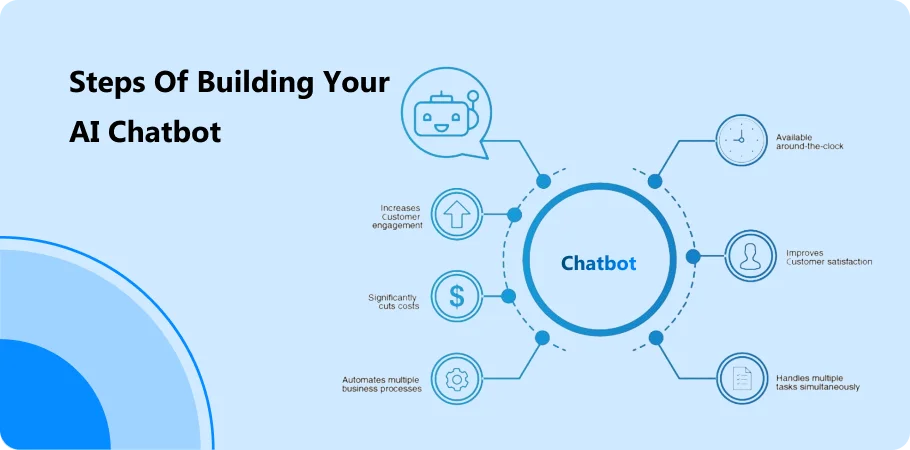
Initial Considerations and Planning
Define the Purpose:
Clearly outline what you want your chatbot to achieve. Is it to create chatbots to answer FAQs, provide support, or engage users in a specific task?
Understand Your Audience:
Knowing who will interact with your chatbot helps tailor the conversation flow and language. Consider multiple languages if you have a diverse user base.
Select the Right Channel:
Decide where your chatbot will live. Will it be on your website, an app, or messaging services like WhatsApp or Facebook Messenger?
Choosing the Right Open-Source Chatbot Framework or Platform
Feature Set:
Look for a framework or platform that supports production-ready conversational skills and can create dialogue systems sophisticated enough for your needs.
Language Support:
If your audience speaks multiple languages, ensure the platform has multi-language support.
Hosting Options:
Decide if you want to host your chatbot on your server or prefer a cloud solution. Open-source conversational AI tools offer hosting flexibility.
Test Extensively:
Before going live, test your chatbot with real users to catch any issues in understanding or flow. Please pay special attention to its ability to handle unexpected inputs.
Community and Support:
Opt for a solution with a strong community or support system, which can be invaluable during development.
Tips for Training and Implementing Your AI Chatbot
Gather and Prepare Training Data:
Collect training data that reflects the range of interactions your chatbot might encounter. This includes questions, statements, and commands in the tone and style of your target audience.
Develop a Conversational Flow:
Map out potential conversations, including questions users who create chatbots might ask and how the chatbot should respond. Create dialogue systems that make chatbots feel natural and helpful.
Train Your Chatbot:
Use the training data to teach your chatbot. This process involves feeding the training data into your chatbot and adjusting its responses based on performance.
Test Extensively:
Before going live, test your chatbot with real users to catch any issues in understanding or flow. Please pay special attention to its ability to handle unexpected inputs.
Deploy on Multiple Channels:
If applicable, make your chatbot available across multiple messaging apps(Facebook Messenger) and messaging services to maximize its accessibility.
Monitor and Iterate:
After deployment, continuously monitor your chatbot’s interactions. Use this feedback to refine its responses, add new functionalities, and improve user experience.
Maintaining and Scaling Your AI Chatbot
Update Regularly:
Keep your chatbot’s information and functionalities up-to-date with regular reviews and updates.
Analyse Interactions:
Use analytics to understand user behaviour and preferences, allowing you to make informed adjustments.
Expand Language Options:
As your audience grows, consider adding support for more languages to serve users better.
Challenges and Solutions in Open-Source AI Chatbot Development
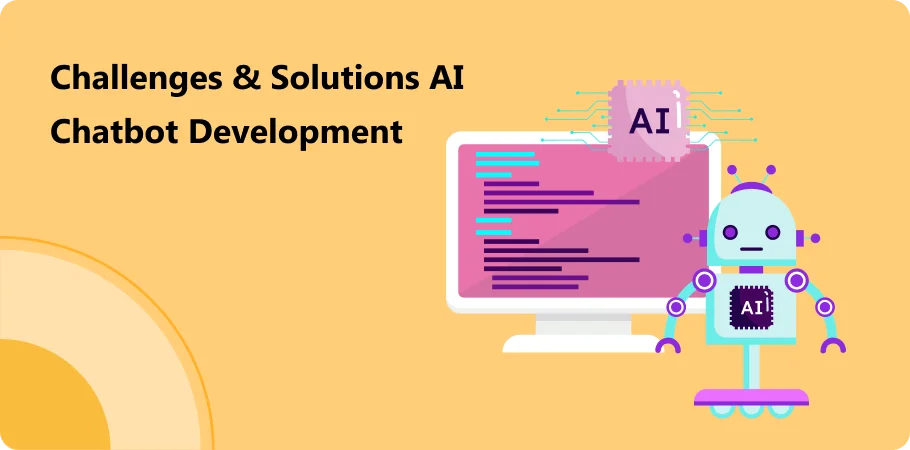
Developing an AI chatbot with open-source tools presents unique challenges, but the right strategies can effectively manage them.
Common Challenges
Advanced NLP Integration:
A key hurdle is incorporating advanced NLP to understand complex queries.
Scalability:
Ensuring the chatbot handles significant API calls efficiently is crucial, especially for enterprise-level use.
Security:
For on-premise deployments, securing user data and privacy is paramount.
External Dependencies:
Reliance on external services for other NLP tasks can affect performance and reliability.
Licensing Costs:
Some open-source chatbot software may require an enterprise license for personal and commercial use, only impacting budgets.
Solutions and Best Practices
Combine Open Source platform with Custom Solutions:
Enhance NLP capabilities by integrating open-source conversational AI with bespoke solutions.
Focus on Efficient Coding:
Opt for scalable open-source tools and regularly refine the chatbot’s architecture to handle growth.
Prioritize Security:
Implement encryption and regular audits to protect user data in on-premise setups.
Minimize External APIs:
Embed key functionalities to reduce latency and improve reliability, minimizing dependence on external services.
Review Licensing Terms:
Clearly understand the licensing requirements of your chosen proprietary software and plan for any necessary enterprise license fees.
Conclusion
Throughout our exploration of open-source AI and chatbot builder solutions, we’ve discovered their great potential for creating advanced, intelligent chatbots. CRM tools like CrmOne are ideal for any business. These solutions integrate seamlessly across various platforms and support multiple programming languages, enabling diverse development possibilities. Chatbot builders offer impressive and wide-ranging capabilities, from handling complex user inputs to incorporating visual context into conversations.
These open-source tools can significantly improve the AI chat experience, making interactions more natural and intuitive for users. Whether you’re a beginner exploring AI chatbots or an experienced developer seeking advanced features and flexibility, the open-source community provides many resources and opportunities for innovation. We encourage you to dive into the world of open-source AI chatbot solutions, experiment with different builders and languages, and create engaging, intelligent chatbots that meet your unique needs and users’ expectations. The journey to building more dynamic, responsive, and intelligent chatbots begins with open-source platforms’ rich features and possibilities.
Get started for Free
Start for free today. Boost your sales by clicking the Get Started button. With CRMOne, you can manage leads, sales, and customer service all in one place.
